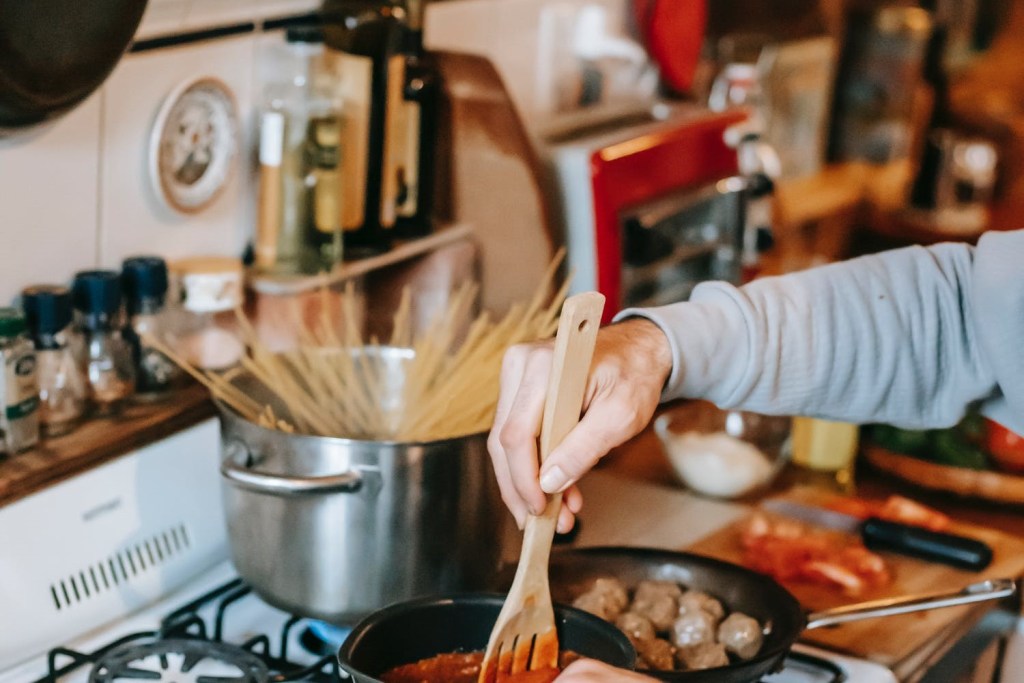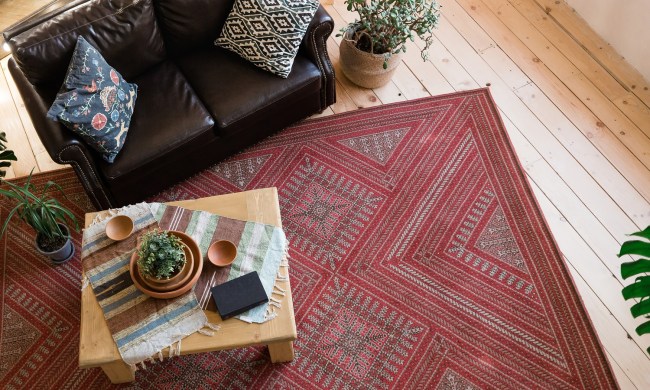
Fire Prevention Week runs from October 3-9, 2021, so take this time to learn everything you can to protect your family from house fires. A fire can engulf a home in a matter of minutes, and many fires are preventable, so be sure to keep these home fire safety tips in mind and share them with friends and family.
Pay attention when cooking
When you’re preparing a meal, minimize distractions.
- Kids: Have someone keep an eye on young kids if they’re in another room, or have them sit at the kitchen table with an activity that will keep them engaged while you cook.
- Pets: Keep pets out of the kitchen if you can, and turn off your cellphone or leave it in another room.
- Turn off the stove: If you must leave the kitchen for any reason, even if it’s just for a few seconds, turn off the stove. If there’s a chance that food in a pan could burn while you’re out of the kitchen, remove it from the burner.
Keep flammable objects away from the stove
Keep potholders, oven mitts, and dishtowels a safe distance from the stove when you’re not using them so they don’t catch fire. If you use a cookbook, set it on a table or counter where it will be out of harm’s way.
Have family members and guests smoke outdoors
Many house fires start when someone smokes inside and the embers come into contact with something flammable. This can also happen when a cigarette isn’t completely extinguished. Have people smoke outside – no exceptions – and provide an ashtray or a metal container for ashes and cigarette butts.
Keep an eye on candles
When you burn candles, make sure there are no flammable objects nearby. Never leave a burning candle unattended, either. A pet or child can knock it over, and the room can quickly become engulfed in flames. If you leave the room for any reason, blow out all candles first.
Keep matches and lighters out of kids’ hands
Children are curious and often don’t understand how dangerous common household items can be. Store matches and lighters on a high shelf or in a locked cabinet where your kids can’t reach them. When they’re old enough, explain the danger, but don’t expect a warning alone to be enough. Continue to keep matches and lighters out of reach.
Don’t use damaged electrical devices or plugs
A damaged electrical device is a fire hazard. If an appliance, laptop, or any other device in your house has a damaged cord or plug, don’t use it until it’s repaired. If it can’t be fixed, replace it. If an outlet is damaged, hire an electrician or a qualified general contractor to repair or replace it. Even if the outlet is in good condition, don’t overload outlets or connect extension cords to each other.
Be careful with heaters
If you want to buy a space heater to keep your house warm in the winter, make sure it’s certified by Underwriters Laboratory (UL), then read and follow the instructions carefully. Like candles, keep the heater several feet away from any flammable objects, such as curtains and furniture. For other heat sources, inspect them regularly and engage in routine maintenance to reduce the risk of a fire. Hire an expert to inspect your furnace, wood stove, or fireplace regularly and make sure it’s cleaned and repaired as necessary.
Take care of your clothes dryer
House fires often start because of excess lint in a dryer or a dryer vent. While many people remember to remove lint after each load of laundry, that’s not always enough. Some lint and other particles can still make their way to the dryer vent where they can accumulate over time and eventually become a fire hazard. Have your dryer vent professionally cleaned at least once a year, more often if you have a large family and use it frequently.
Other ways to keep your family safe
- Your home should have at least one smoke detector on each level and near each bedroom. If you have young kids, explain what a smoke detector does and let them hear the sound it makes so they’ll recognize it if a detector goes off because of a fire. Check each smoke detector every month and replace the batteries twice a year.
- Keep at least one fire extinguisher in your house, plus one in the garage and any other area where there is a risk of a fire. Make sure that all adults and children who are old enough to handle a fire extinguisher know how to use one.
- Create a plan so every family member knows what to do if there is a fire. Identify at least one way out of each room, and point out escape routes to your kids and explain how to get out if there is a fire. Choose a location for all family members to meet after evacuating the house. It should be far enough from your home that everyone will be out of danger, but close enough that everyone will be able to get there quickly. Practice with monthly fire drills.
- Explain to your younger kids that a fire can spread quickly and that they should evacuate the house immediately and not try to take any possessions with them.
- Since smoke rises, it’s best to stay close to the ground during a fire. Children may want to hide, but you should stress that hiding would make it harder for firefighters to rescue them. Add to your fire safety plan that children should stay close to their beds so firefighters can find them.
No one likes to think about house fires, but they’re an unfortunate reality. Simple precautions can prevent a tragedy. Discuss home fire safety with your family and follow these important steps to stay safe.





